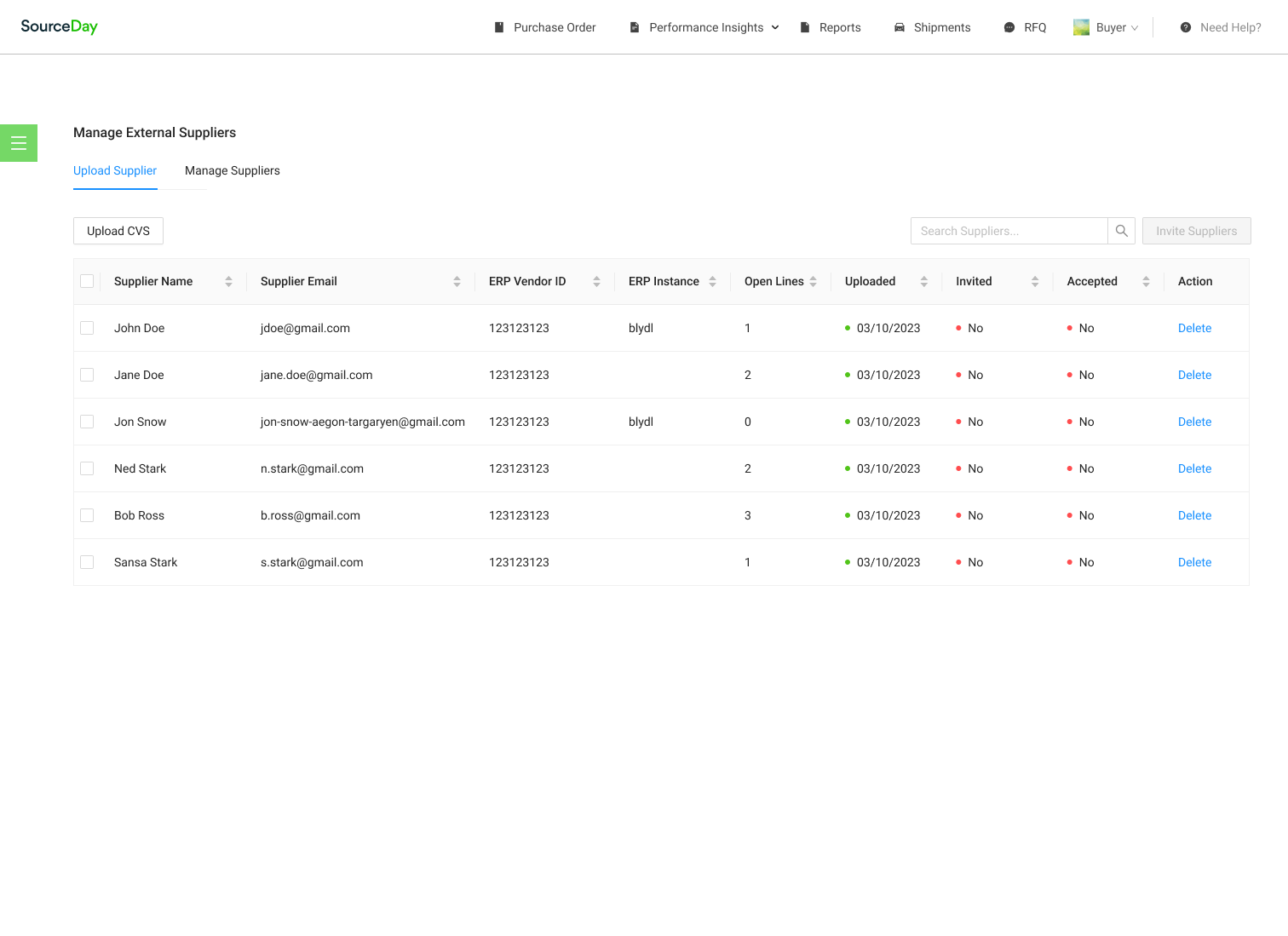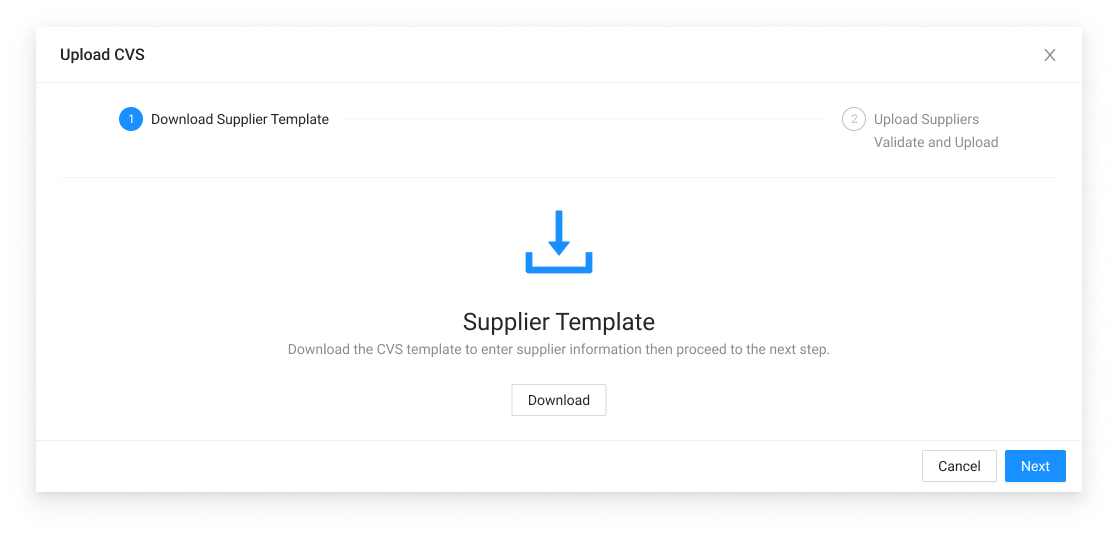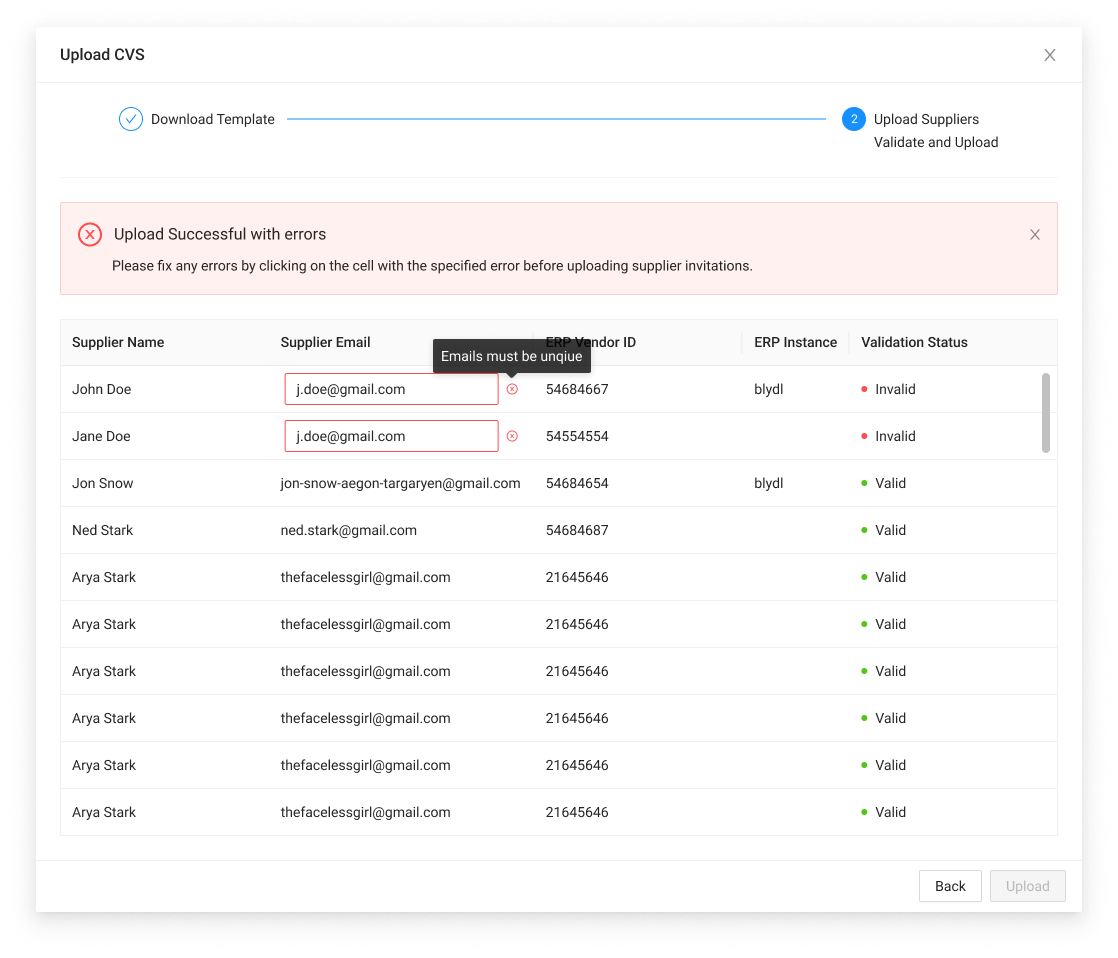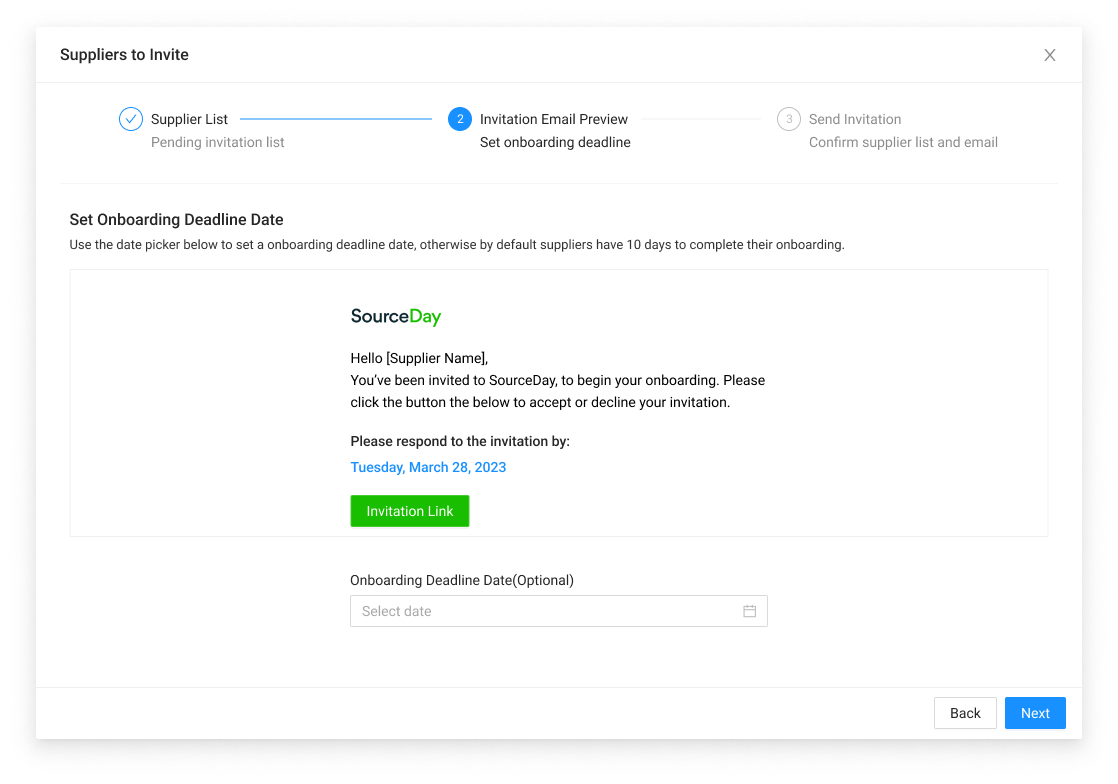Buyer Centric Supplier Onboarding
Case Study
Project Summary
This UX case study delves into the creation of a robust supplier onboarding platform tailored exclusively for buyers. The platform aims to simplify the process of inviting and managing suppliers, offering features such as streamlined Csv data uploads, comprehensive onboarding progress tracking, swift error resolution, and customizable email templates for invitations. The primary objective is to provide buyers with a seamless and user-friendly tool that enhances their control and efficiency in managing supplier relationships.
The Challenge/Problem
The challenge at hand is to design a platform that caters specifically to the needs of buyers during the manual supplier onboarding process. This includes addressing the labor-intensive manual process of inviting suppliers, the lack of progress visibility, communication issues, and the need for internal teams to manually handle the invitation process.
Project Goals and Solutions
Goal
Design an intuitive table-based view of suppliers for easy access and management.
Solution
Created a visually organized and user-friendly table interface where buyers can efficiently view and manage supplier information. The table layout allows for quick sorting, filtering, and searching, enabling buyers to access relevant supplier data effortlessly

Goal
Develop a user-friendly CSV template to facilitate accurate and standardized data entry by buyers.
Solution
Designed a downloadable CSV template that aligns with the platform's data structure. The template includes clear instructions and predefined columns, ensuring that buyers enter supplier information accurately and consistently.

Goal
Create a wizard-like UI for CSV data uploads, enabling buyers to preview, validate, and edit supplier information seamlessly.
Solution
Introduced a step-by-step wizard that guides buyers through the data upload process. Buyers can preview uploaded data, validate accuracy, and make edits before finalizing the upload. This ensures that supplier information is thoroughly reviewed and error-free.

Goal
Enable buyers to customize and utilize email templates for communication, promoting personalized interactions.
Solution
Implemented a user-friendly email template editor that enables buyers to create and customize invitation emails. Buyers can tailor communication to suit their branding and establish a more personalized connection with suppliers.

My Role and Contributions
Harnessing both my UX design and front-end development skills, I embarked on a multifaceted approach that deeply impacted various stages of the design process:
Wireframing:
Drawing upon my front-end development insights, I meticulously crafted detailed wireframes that carved out the platform's underlying structure. These wireframes, meticulously aligned with best practices, laid the groundwork for the table-based supplier view, the user-friendly CSV template, and the wizard-like UI for data uploads.
High-Fidelity Mock-ups:
Transitioning from wireframes, I ventured into designing high-fidelity mock-ups that resonated with a cohesive visual identity. My front-end development expertise played a pivotal role in ensuring a seamless integration of colors, typography, and layout, contributing to a design that harmonized with user-centered goals.
Prototyping:
Translating the high-fidelity mock-ups into interactive prototypes was a natural extension of my skills. My proficiency as a front-end developer enabled me to create prototypes that not only demonstrated visual design but also showcased dynamic interactions, delivering a tangible experience to stakeholders and the internal team.
Feedback Collection:
Engaging with stakeholders and collaborating with the internal team, I facilitated feedback sessions where I presented the prototypes. My dual role allowed me to delve deeper into technical discussions, translating design choices into tangible development feasibility, and ensuring a balanced perspective.
Iterative Design Process:
My unique blend of UX design and front-end development expertise enriched the iterative design process. Analyzing feedback through both lenses, I seamlessly translated suggestions into design enhancements and development feasibility, driving a holistic evolution of the platform.
Results of Design
During the development journey, a series of iterative prototypes were thoughtfully presented to the internal team responsible for manual supplier onboarding. This collaborative feedback loop proved instrumental in shaping the platform into a tailored solution that effectively catered to their requirements. The initial prototypes, introduced with a keen focus on addressing pain points and enhancing workflow efficiency, garnered an overwhelmingly positive response from the internal team.
Validating User-Centered Approach:
The engagement with the internal team was far more than a presentation; it was a dynamic exchange of insights and perspectives. Their practical experience and deep understanding of the manual onboarding process provided invaluable context, which was seamlessly integrated into the design enhancements. This alignment between user feedback and design decisions underscored the user-centered approach, ensuring that the platform resonated authentically with the team's needs.
Streamlined Workflow and Enhanced Usability:
The internal team expressed genuine enthusiasm for the platform's advancements. The streamlined table-based supplier view, guided CSV template, and wizard-like data upload interface collectively transformed their workflow. This transformation translated into tangible benefits: reduced administrative burdens, enhanced data accuracy, and a newfound sense of control over the onboarding process.
Empowered Decision-Making:
Through the prototypes, the internal team was empowered to visualize and interact with the platform's features firsthand. This experiential engagement translated into increased confidence in their decision-making processes. They could anticipate the impact of their actions, preview supplier information, and validate data accuracy before making commitments.
Refined Iterations for Maximum Impact:
The iterative nature of the design process further solidified the platform's efficacy. Each feedback session acted as a stepping stone for refinement, guiding the design towards an outcome that truly resonated with the internal team. The enhancements made were not just cosmetic; they were strategic refinements that aligned the platform closely with the team's operational needs.
Conclusion
The results of the iterative design process, marked by collaborative feedback and thoughtful integration, yielded a platform that not only met but exceeded the expectations of the internal team. The positive reception of the initial prototypes, driven by user-centric enhancements, validated the success of the design journey. The refinements not only streamlined the manual supplier onboarding process but also underscored the platform's role as a tool for empowered decision-making and enhanced efficiency.